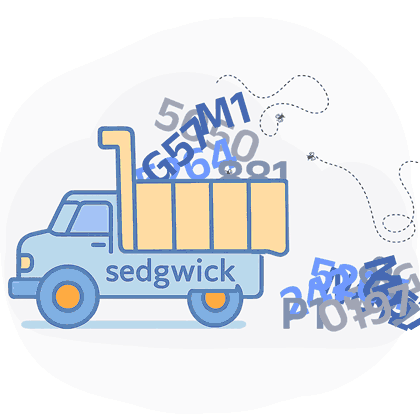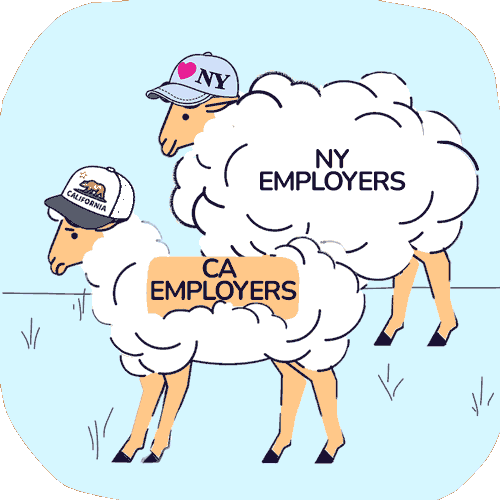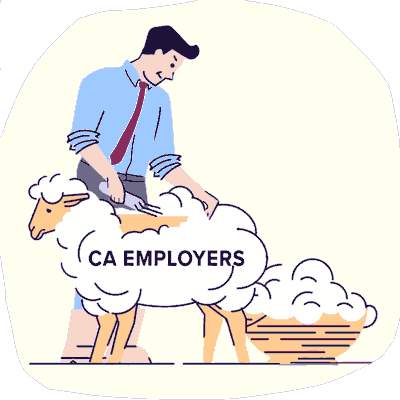CA: “Unlisted" Codes - Same Old Blame-the-Thieving-Doctor Trope

To understand what truly drives workers’ comp costs, California must stop relying on insurer-produced “research” that misleads employers and scapegoats doctors.
California employers pay almost twice the national median to deliver workers’ comp benefits, according to the Workers’ Compensation Insurance Rating Bureau (WCIRB). Like the WCIRB, the California Workers’ Compensation Institute (CWCI) publishes reports claiming to explain why California’s costs are so high.
And like the WCIRB, the CWCI is funded and governed by the insurance industry—the same industry that profits when employers’ costs increase.
These insurer-backed entities have a long track record of steering the conversation away from the fundamental comp cost driver (claims administrators) and toward an easy, false villain: greedy doctors. The latest example is a blog post that paints physicians who use “unlisted” procedure codes as “plundering” the system.
Here’s what the blog post conveniently left out:
• Payers determine the treatment and which doctors provide it. Claims administrators restrict injured workers to certain doctors and approve or deny every treatment those doctors recommend.
• “Unlisted” codes require permission. No physician is owed payment for an “unlisted” procedure code without first obtaining the payer's prior explicit permission.
These insurer-funded campaigns keep employers looking in the wrong direction.
Insurers control both the CWCI and WCIRB, feeding employers “data” supplied by their own members. Yet these organizations are treated as neutral authorities, free from independent oversight, while the fundamental forces driving California employers’ sky-high workers’ comp costs go unexamined.
The Payer Blame Game
A recent blog post from Managed Care Matters references CWCI “data” to warn employers about a “huge jump” in doctors’ use of CPT 97799 for “unlisted physical medicine.”
The piece strongly implies that this increase is a red flag, indicating that doctors are “coding for dollars” by reporting codes for which the state fee schedule doesn’t specify a reimbursement.
It’s a classic insurer tactic: trot out selective data, blame the doctors for the system’s woes, and hope no one asks about the actual decision-makers or to see the “data” itself. Often, CWCI reports are “Members Only;” the public can’t review the raw numbers or methodology.
For many CWCI reports, only the insurers (and “Associate Member” self-insured employers) who fund the CWCI can see behind the curtain.
What the Insurance Industry Isn’t Telling Employers
If you’re a California employer, the following factors have an exponentially higher impact on your workers’ comp costs than any supposed billing maneuvers by doctors:
-
Who Treats – In nearly every case, your insurer or Third-Party Administrator (TPA) chooses the doctor through California’s Medical Provider Network (MPN) system, a system so opaque and exploitative that its primary function is to lock providers into discount reimbursement contracts that benefit payers, not employers.
-
What’s Approved – Payment is owed for treatment only if a physician obtains prior written authorization from the claims administrator. The claims administrator decides whether physician-recommended care is “medically necessary” using the equally opaque and payer-controlled Utilization Review (UR) system.
- How Much Is Paid — For unlisted procedure codes (like 97799), the Official Medical Fee Schedule mandates a formula for calculating reimbursement. Providers don’t “name their price.”
In other words, even if CPT 97799 usage rises, it doesn’t change the facts: claims administrators selected the doctors and approved the services, and the state dictated the payment amount.
Doctors have virtually no ability to inflate overall employer costs or “plunder” the system. Claims administrators, on the other hand, wield far more influence over those total costs.
Data or Distraction?
The “coding for dollars” narrative is a smokescreen designed to distract employers from the real, entrenched cost drivers:
-
Opaque, restrictive MPNs that block access to care and trap doctors in discount contracts that benefit payers.
- Abusive UR practices that allow claims administrators to delay or deny medically appropriate care, prolonging claims duration and driving employer costs higher.
By portraying providers as villains while relying on findings from industry organizations, these narratives shift employer attention from asking hard questions about their claims administrators and the private equity interests profiting from every delay, denial, and administrative hurdle placed in front of an injured worker.
If California employers want to rein in workers’ comp costs, the solution is simple: hold payers accountable.
Until the focus shifts from scapegoating doctors to scrutinizing the actual decision-makers, costs will remain exorbitant, and California workers will stay injured much longer than they should.
daisyBill calculates the correct fee schedule reimbursement, so you know exactly what the payer owes your practice. Click below to learn more:
BILL BETTER
DaisyBill provides content as an insightful service to its readers and clients. It does not offer legal advice and cannot guarantee the accuracy or suitability of its content for a particular purpose.
.gif)





